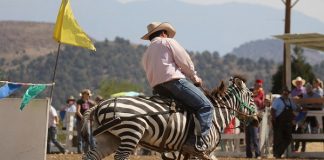There is so much potential in a young, green horse. Or is there? You need to be careful, advises Dr. Ken Kolb, an equine veterinarian in California. Although his practice primarily involves caring for American Quarter Horses that race at Los Alamitos racetrack, he also administers to a variety of sport and pleasure horses.
Even if a youngster passes a pre-purchase exam, Kolb says that’s no guarantee of long-term future soundness. The same is true for buying a trained horse that has been semi-retired. Or a show mare that has had some foals, and is now being marketed as a riding horse.
“You can’t always predict how a horse will hold up, once he’s put to regular training and work,” Kolb says. “And in the case of a horse that’s been turned out or in a light work program, yet now he’s going into more regular, strenuous work, soundness issues may suddenly crop up. With a show horse that has been taken out of training or turned out, it’s wise to wonder, ‘Why did they stop with this horse in the first place?’”
While he does not believe that every green or semi-retired horse is a lameness problem waiting to happen, Kolb does have some words of wisdom for horse buyers who are especially anxious about gambling on the unknown. “Buy a horse that’s already doing what you want to do. That way, you have a pretty good indication that it can stand up to the amount of riding you want to do.”






This is a good point to make. A year ago I rushed into buying a horse and he went lame a month after the vet check. Half a year later he died, and now I am looking for a new horse. For me, soundness is the greatest issue. A message to anyone looking for a horse: don’t be disheartened when you don’t find a horse in the first month or so. It will take a while to find the perfect steed, and the best thing you can do in the meantime is be patient. This article is very true and I hope that everyone who reads it will abide by it.